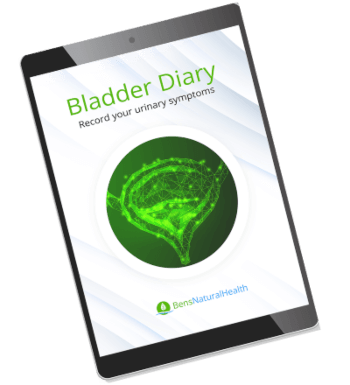- Types of ovarian cysts
- What causes an ovarian cyst to rupture?
- Signs and symptoms your ovarian cyst might have ruptured
- Is a ruptured ovary cyst a medical emergency?
- What to do if you suspect your ovarian cyst has burst
- What to expect after an ovarian cyst ruptures?
- Possible risks and complications of a burst ovary cyst
- Managing ruptured ovary cysts
- How do you take care of yourself after a ruptured ovarian cyst?
- FAQs
- Conclusion
- Source
An ovarian cyst is a fluid-filled sac or pouch that forms inside or on the ovary.
Ovarian cysts are quite common in women.
Studies have shown that they are found in transvaginal ultrasounds of most premenopausal women and in as much as 18% of postmenopausal women.
Some cysts resolve spontaneously without causing harm and with no need for treatment.
However, others grow bigger and eventually burst open (rupture) in the abdomen.
A ruptured ovarian cyst can lead to sudden severe abdominal pain and bleeding. This bleeding can sometimes be fatal.
In this article, we tell you everything you need to know about ruptured ovarian cysts, including the risk factors, signs and symptoms, complications, and treatment options.
Types of ovarian cysts
Rupture is just one of the complications you can get if you have an ovarian cyst. Other possible complications include ovarian torsion (when the cyst grows big and causes the ovary to twist) and infection.
Depending on how they develop, there are several types of ovarian cysts. These are usually put under two main categories:
1) Functional cysts
Females normally have a uterus with one ovary on either side of it. Every month, one of the ovaries releases a follicle.
This is a small sac filled with fluid that bursts during ovulation to release an egg.
After an egg is released, the ruptured follicle becomes the corpus luteum, which helps to maintain the inner lining of the womb.
In some instances, a follicle may not release an egg. In that case, it will also not release its fluid content.
This can cause it to swell up and subsequently form a cyst. This is referred to as a functional cyst.
Functional cysts are usually not a cause for concern. Occasionally, they can cause abdominal pain. However, they are benign and should disappear without treatment within a few months.
2) Pathological cysts
These occur as a result of abnormal growth of cells within the ovaries. They can come from the cells on the outside of the ovary or from the cells used to form the egg.
Pathologic cysts are not related to the menstrual cycle. They may be benign or cancerous.
Examples of pathologic cysts include:
- Dermoid cysts, also referred to as teratomas, they are cysts that develop from cells of an egg in the ovary. These cysts can contain skin, hair, teeth, fat, muscle, and even brain tissue. They are mostly benign but, in rare cases, can be cancerous.
- Endometrioma (chocolate cyst) is a cyst that is caused by endometriosis. Endometriosis is a condition in which cells similar to those present in the inner lining of the uterus are found growing in other places outside the uterus, e.g., the fallopian tubes and ovaries. The abnormal tissue can form on the ovary, and a cyst may develop.
- Cystadenoma is a type of cyst that develops from the cells found on the surface of the ovaries (epithelial cells). There are different types of cystadenomas, and they may be filled with clear-watery fluid or mucous. They are benign and usually respond well to treatment.
- Polycystic ovarian syndrome (PCOS) is a condition in which there are multiple cysts on the ovary as a result of an imbalance in certain hormones. People with PCOS may have difficulty getting pregnant.
Get your FREE bladder diary
- Daily bladder diary
- Better understand your urinary symptoms
- Step-by-step guide
What causes an ovarian cyst to rupture?
It is not known why some cysts rupture while others do not. However, certain factors increase the tendency for a cyst to burst:
- Size: The bigger the cyst, the higher the chances of it bursting.
- Activity: Strenuous exercise or sexual intercourse can increase the risk of rupture.
- Type: Functional cysts are the most common types of cysts that rupture. They can burst during the normal menstrual cycle and not cause any major problems.
Signs and symptoms your ovarian cyst might have ruptured
When an ovarian cyst bursts, there may be no symptoms. Some may only feel a sudden sharp pain or discomfort that subsides.
However, others may experience:
- Bleeding from the vagina or spotting
- Nausea and vomiting
- Dizziness
- Fever
- Bloating
You should see a doctor immediately if you have any of the following signs and symptoms:
- Severe bleeding
- Severe abdominal pain
- Pain accompanied by fever or vomiting
- Dizziness
- Fainting
- Fast breathing and/or heartbeat
- Excessive sweating
- Cold, clammy skin
Is a ruptured ovary cyst a medical emergency?
Some people may have a ruptured ovarian cyst without any need for medical attention. The symptoms can resolve without treatment.
However, for others, it can be a medical emergency because of serious bleeding (hemorrhage).
What to do if you suspect your ovarian cyst has burst
If you have any of the above symptoms or you suspect that your ovarian cyst has burst, visit your doctor as soon as possible.
While an ovarian cyst rupture is often mild, it can be fatal in some cases. So, it is always best to be checked by a doctor as soon as possible.

What to expect after an ovarian cyst ruptures?
Most people feel abdominal pain or discomfort at the time the cyst ruptures, which can continue for a few days afterward.
The pain may disappear on its own or with over-the-counter pain medications (NSAIDs) like ibuprofen.
Watch out for persistent or worsening pain, bleeding, dizziness, vomiting, or nausea. Speak with your healthcare provider if you notice any of these.
Possible risks and complications of a burst ovary cyst
Most ruptured ovarian cysts do not cause any complications. But, in some cases, they might cause heavy bleeding and lead to blood pooling in the peritoneal cavity (a fluid-filled space in your abdomen where most of the organs are contained). This condition is known as hemoperitoneum.
You may require hospital admission, a blood transfusion if the hemorrhage is significant, and emergency surgery to stop the bleeding.
Some complications may arise from the surgery. These include:
- blood clots
- poor healing of the incision
- scar tissue after surgery (adhesions)
- risks associated with anesthesia
- accidental damage to organs or blood vessels around the pelvis
It is important to know that every surgery has its associated risks. But, in serious cases, there is a greater risk if surgery is not performed.
Managing ruptured ovary cysts
Most women with ovarian cysts do not have any symptoms. The cysts may be discovered accidentally during an ultrasound scan conducted for another reason.
Some, on the other hand, could be symptomatic. Management of ruptured ovarian cysts depends on the kind and severity of symptoms you have.
Steps in the management of ruptured ovarian cysts include:
1) Medical history
Your doctor will take a thorough history from you. This involves asking you questions about your symptoms and past medical history.
2) Physical examination
After a history is taken, your healthcare provider will perform a physical exam on you looking for any signs of a ruptured ovarian cyst.
Your doctor may be able to feel the cyst during examination if it is big enough.
3) Investigations
After the examination, your obstetrician-gynecologist (ob-gyn) should have a couple of diseases in mind that may be the cause of your symptoms.
Some tests will need to be done to reinforce the diagnosis of a ruptured ovarian cyst and to ascertain the type of cyst.
These include:
- Ultrasound scan: This involves a device that uses sound waves to create images. It can show your OBGYN your internal organs. A probe is placed on the abdomen or through the vagina. It could show if a cyst is present, the location, the number of cysts, the size(s), and whether it has ruptured or not.
- CT scan: This is done especially when hemorrhage is suspected. However, a CT scan cannot be used if you are pregnant due to the risk of radiation exposure to your unborn child.
- Blood tests: Your doctor may order tests like a complete blood count to check your hemoglobin levels and see whether you have anemia from the blood loss. The white blood cell count may also guide your doctor about the presence of some complications like infection.
- Urine tests: A urine pregnancy test can be done to rule pregnancy as the cause of your abdominal pain. A urinalysis may be ordered to check whether you have a urinary tract infection (UTI) because UTIs can also cause abdominal or pelvic pain.
- Endocervical swab: This may be done if your doctor suspects that pelvic inflammatory disease (PID) is the cause of your abdominal pain. PID may be caused by chlamydia and gonorrhea.
- Tumor markers (Cancer antigen 125): Your doctor may request this test if your ovarian cyst is suspected to be cancerous. A raised level of CA-125, along with other symptoms and signs from physical examination, may indicate a malignancy (cancer).
4) Treatment
There are different treatment options available for the management of a ruptured ovarian cyst. The treatment option chosen depends on the type of cyst, the size, the presence or absence of bleeding, and several other factors.
Options include:
Conservative management or watchful waiting
Your ob-gyn may recommend watchful waiting to manage the ruptured cyst. This involves monitoring the cyst for any changes in size or appearance through serial ultrasound scans. You will need to be followed up regularly to monitor the cyst.
Your ob-gyn will let you know how frequently these scans need to be done and how often you need follow-up. Most cysts will disappear after a few menstrual cycles, usually 1-2 cycles.
Surgery
Surgery may be recommended if the cyst is big, causing serious symptoms, or if the symptoms are pointing to cancer.
The type of surgery performed depends on several factors, including your age, the size of the cyst, whether you want to have children, whether you have a family member with breast or ovarian cancer, and whether a malignancy is suspected.
Just the cyst may be removed (cystectomy) in simple cases. In other cases (e.g., when malignancy is suspected), the whole ovary may be removed. This is called oophorectomy.
A minimally invasive surgery known as laparoscopy is preferred when the cyst is benign.
This procedure involves making small incisions on the belly to gain access to the inside of the abdomen.
A small tube with a camera and a light source is used to visualize inside the abdomen. The images are relayed on a television monitor.
Laparoscopic surgery is less painful than open surgery and shortens the duration of hospital stay due to faster recovery time.
An ‘open surgery’ known as a laparotomy may be recommended if the cyst is large or if malignancy is suspected.
In this type of surgery, a horizontal or vertical incision is made on the lower part of the abdomen to remove the cyst.

How do you take care of yourself after a ruptured ovarian cyst?
If you have a ruptured ovarian cyst, you must ensure that the treatment you take is recommended by your ob-gyn. Be sure to attend all your appointments and contact your doctor if you have any worries.
Here are some general tips:
- Take your medicines as prescribed for you. If you have any drug that was not prescribed for you, ask your doctor before you start taking it.
- Have a warm bath, or use a heating pad or warm water bottle to relieve tense muscles and cramping.
- Immediately call for help if you have excess vaginal bleeding, loss of consciousness, worsening pain in your pelvis or belly, or dizziness. These are danger signs and may need urgent medical attention.
- If you had surgery, some pain around the incision site is expected within the first 2-3 days after the surgery. You may take over-the-counter pain medications such as Advil, Tylenol, or Naproxen. Ask your doctor about these before you start taking any of them.
- Walk around as much as you can. This improves blood flow and helps to speed up wound healing.
- Do not carry, push, or pull any heavy objects within the first few weeks after surgery.
- Avoid sexual intercourse until your doctor tells you to.
FAQs
Here are some commonly asked questions about ovarian cyst rupture:
Is a ruptured ovarian cyst life-threatening?
A ruptured cyst can be life-threatening if it causes excessive bleeding. Excessive bleeding can lead to symptoms like severe and worsening pelvic pain, fast breathing, fast heartbeat, dizziness, fainting, and cold, clammy skin.
If you experience any of these, contact your doctor. If the pain is unbearable or persistent, visit the emergency room as soon as possible.
And, if you are not sure about your symptoms, it’s always best to speak with a healthcare professional to be safe.
What does it feel like when an ovarian cyst ruptures?
You may feel pain in your belly or lower back, which may disappear after some time. Sometimes, the pain may be severe and continuous.
If you know that you have an ovarian cyst and you suspect that it is ruptured, visit a hospital.
Some tests need to be performed by your ob-gyn to ascertain that the pain you have is actually from a ruptured ovarian cyst.
There are several organs in the abdomen, and pain in your belly could mean a problem in any of those organs.
Should I be worried if an ovarian cyst ruptures?
Most ruptured ovarian cysts do not cause harm. But if your symptoms are getting worse (severe belly pain or bleeding from the vagina), you should see a doctor immediately.
Can a collapsed ovarian cyst go unnoticed?
Yes, you can have a burst ovarian cyst and not have any symptoms or complications. Some people may feel pain in their belly or pelvic area, but it disappears after some time without any medical intervention. Others only feel mild discomfort in their bellies.
How long does ruptured ovarian cyst pain last?
The pain may last for a few hours to days. If you have pain that persists or worsens, visit your healthcare provider as soon as possible.
Conclusion
Ovarian cysts are fluid-filled pouches or sacs that develop in the ovaries. They are common, particularly in women of reproductive age.
There are different types of cysts – functional cysts, which are related to the menstrual cycle, and pathologic cysts, which are not related to the menstrual cycle. Most ovarian cysts are benign and are usually not a cause for concern.
Rupture is one of the complications that could occur if you have an ovarian cyst. It occurs more frequently with functional cysts. Some factors that can increase the risk include strenuous exercise and vigorous sexual activity.
Ovarian cyst rupture is usually not a life-threatening condition. Many people do not know they have a ruptured cyst because they don’t experience any signs or symptoms.
For others, the pain may be severe and may be associated with vaginal bleeding. In such cases, prompt medical attention is needed. Excessive bleeding is life-threatening, and surgery may be needed to stop it.
Explore More








